Armored car FIAT 611 (Italy)
According to the technical assignment issued to the developer, the prospective armored car was supposed to belong to the average weight category and exceed all available weapons in combat weight. In addition, the task stipulated the parameters of armor, the composition of weapons and approximate characteristics of the finished machine. The Italian industry has already had some experience in creating armored cars, and also followed the main foreign trends. Thus, the task of the military did not look too complicated or impracticable.
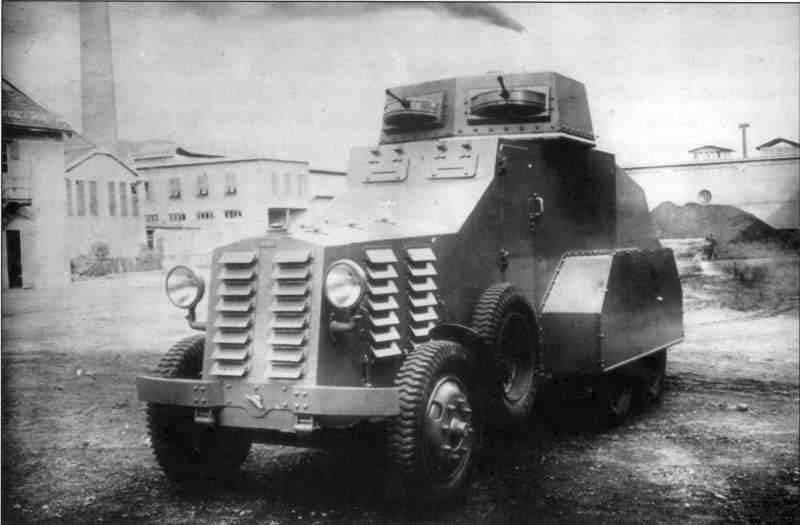
The first prototype armored car FIAT 611
As before, it was decided to build a new armored car on the basis of an existing truck. As the basis for the combat vehicle chose the chassis of the truck FIAT Dovenque 33, produced from the beginning of the thirties. This machine had a wheel formula 6х4 with a drive on two rear axles and could carry up to 2 tons of cargo or up to 20 soldiers with weapons. Due to this, the new truck was considered a suitable basis for a promising armored car.
The design of the armored car, designated FIAT 611, implied the use of the existing chassis, on which the metal frame and a set of armor plates, protecting the crew and internal units of the vehicle from bullets and shell fragments, should be mounted. Due to the standard approach to the architecture of the machine, it was planned not only to fulfill the requirements of the military, but also to reduce the final cost of the equipment.
The base chassis had a frame structure and was equipped with leaf springs, on which all three bridges were attached. In front of the chassis was a FIAT 6B 122-cylinder petrol engine with 45 horsepower. The transmission used a four-speed gearbox with a gearbox and a propeller shaft, transmitting torque to the rear driving axles. The front wheels of the car were connected with the control mechanism and were performed shedding. On the rear axles installed dual wheels, which improved the distribution of the load on the supporting surface.
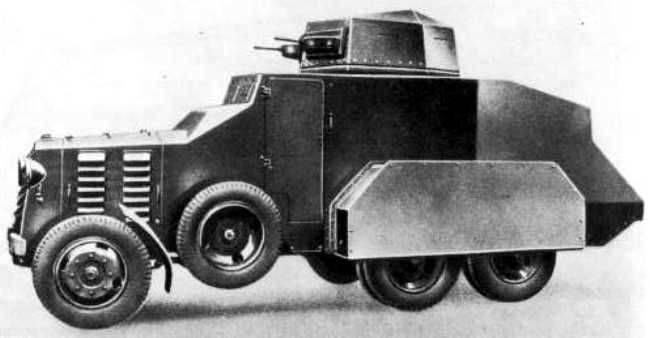
The first prototype armored car FIAT 611
During the creation of the armored car, it was decided to keep one interesting feature of the base machine. Behind the engine compartment on the sides of the hull provided for mounting for two spare wheels, allowing them to rotate. Mounts were at a small height above the bottom of the case, because of which the bottom surface of the wheels hung in the air. Under certain conditions, an extra wheelset, raised above the ground, could have a positive effect on the vehicle’s permeability.
The classic layout of the base chassis affected the design of the armored hull. It was carried out under the hood scheme and was divided into two main volumes: the engine compartment and the combat compartment, combined with the control compartment. The body was assembled from armor plates with a thickness of 6,13 mm. According to some reports, the frontal parts and the tower had more effective protection in the form of 15-mm armor. A characteristic feature of the body of the FIAT 611 armored car was the almost complete absence of armor plates installed at large angles to the vertical. Only frontal and stern sheets of the hull were inclined. All other panels were placed vertically or at a slight angle, which did not affect the level of protection.
To protect the engine was used armored hood with louvers for ventilation. In order to ensure optimal temperature conditions, the blinds were located both on the front sheet and on the sides of the bonnet. The first prototype used unregulated shutters, which were bent sections of armor plates. In the future, the design of these units has undergone significant changes.
Behind the engine compartment was an inclined upper frontal sheet of the fighting compartment. It had a rather complex shape with several bends, which, apparently, were associated with the characteristics of the location of the steering wheel in the front wheelhouse. The sides of the vehicle were positioned vertically, and the aft part of the hull was a tapering unit of characteristic shape with a separate vertical sheet, in which the viewing hatch of the second driver was provided.
On the roof of the case there was a hexagon tower with machine-gun armament for two shooters. To protect the rear wheels on the sides of the hull were large covers, assembled from armor plates. In the event of a wheel replacement or other repair, the casing board could be raised and secured in this position.
The crew of the FIAT 611 armored car was to consist of five people. In front of the habitable volume was the first driver. Behind him, under the rotating turret, are two machine gunners. The place of the second driver was located in the rear of the hull and was equipped with a set of necessary instruments and controls. For landing in the car, the crew had to use a door in the port side or aft hatch. It was proposed to monitor the situation with the help of two hatches with covers in the front hull sheet, as well as through the viewing gaps in the doors, sides and the tower.
The armament of the first experienced armored car of the new model consisted of three Breda Mod.30 machine guns of 8 mm caliber. Two machine guns are located in the tower, in their own installations. They should have been used by two shooters who had the opportunity to independently search and fire at targets within the same sector. The third machine gun was located in the embrasure of the hull's stern sheet, on the starboard side. This machine gun could be controlled by a commander or a second driver. The total ammunition of three machine guns consisted of 10 thousand cartridges.
The ready-made FIAT 611 armored car had a length of about 5,7 m, a width of 1,9 m and a height of the roof of the turret of the order of 2,6 m. during the tests had a negative impact on mobility characteristics. So, on the front axle accounted for about 6,9 t, and at the rear - for 7 t.
Construction of the first prototype of a promising armored vehicle began at the end of 1932 of the year. Trials started in the new 1933 year. Without waiting for the end of the tests, the military approved the project and began to make plans for the mass production of new equipment. By the end of the year, FIAT received an updated list of requirements for an armored car and an order for the production of several serial cars. However, as it turned out during the tests, the new armored car was too heavy and therefore did not have high performance.
It is easy to calculate that the specific power of the FIAT 611 machine did not exceed the 7-7,5 HP. per ton. Because of this, the maximum speed of the armored car on the highway was at the level of 25-28 km / h. When driving on a dirt road or rough terrain, it was not possible to accelerate to more than 10 km / h. When driving on the highway, the fuel reserve was enough for 280 km of the way. Due to the high and heavy body, the machine had serious limitations on the allowable roll, which almost excluded its operation on the roads.
Despite the low running performance of new cars, the customer decided to purchase a certain amount of such equipment. However, before the start of mass production it was necessary to recycle some elements of the machine. By order of the military, the design of the blinds for ventilation was changed. On the front sheet of the hood appeared a common large grille with relatively small slots. Similar, but vertical units appeared on the sides of the hood. Some changes undergone inclined frontal sheet, protecting the driver.
It was proposed to change the weapons complex, for which it was necessary to develop an updated version of the tower, suitable for installing any of the required types weapons. For orders of the Italian Defense Ministry, in a matter of weeks, FIAT 611A and 611B projects were developed. In the first case, the installation of a new turret and the preservation of two 8-mm machine guns in individual installations was implied. The FIAT 611B project involved a significant increase in firepower. To this end, it was proposed in the turret to install an 37-mm cannon with a barrel with a length of 40 gauges. Ammunition guns was 50 shells. In the stern of the turret appeared the installation for the machine gun. Aft machine gun hull remained in its place. The machine gunners had 1500 cartridges at their disposal.
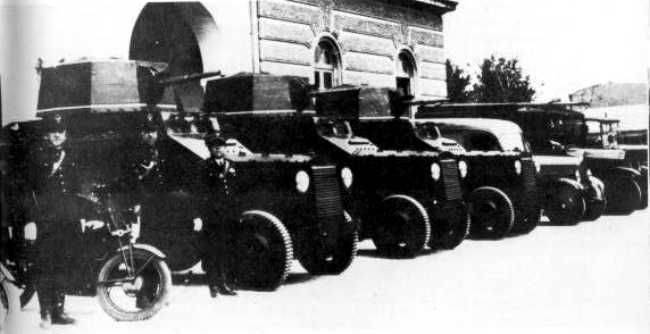
Another event. In the foreground are FIAT 611B armored cars
By the fall of 1933, the military placed an order for the supply of 10 new type armored vehicles. Half of this equipment was supposed to carry machine gun weapons, the rest - cannon. The last vehicles of this order were handed over to the troops at the start of the 1934 of the year. The servicemen of the combatant units quickly mastered the new technique and sentenced it no less quickly. Insufficient characteristics and low maneuverability, which did not allow to work effectively in off-road conditions, became the reason for refusing further purchases of such machines.
During the first two years of service, FIAT 611 armored cars of two modifications were used only in various exercises, etc. events. In addition, in October 34, several such machines took part in the parade. In the spring of 1935, it was decided to send several new cars to Ethiopia to participate in the hostilities. Nevertheless, due to certain reasons, the military were in no hurry to carry out this order, which is why armored cars arrived at the front only in March of 36. According to some reports, five armored vehicles of two modifications were sent to Ethiopia.
Due to the late arrival in Africa, five armored vehicles managed to take part only in the last battles and did not have a serious impact on the course of the entire war. Nevertheless, they were able to demonstrate the good potential of the FIAT 611B cannon, which could be effectively used as a mobile infantry support tool. However, in the course of the war in Ethiopia, numerous deficiencies in technology again manifested themselves. The lack of speed and maneuverability seriously affected the effectiveness of armored vehicles, which was one of the main reasons for the lack of visible success.
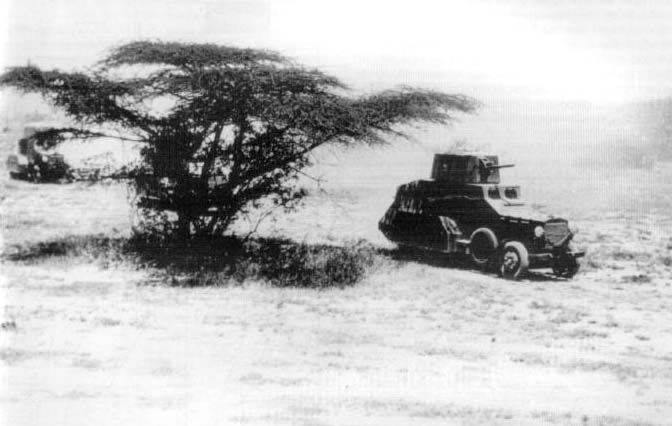
FIAT 611B in Africa
After the end of the war, five armored vehicles remained in Africa, where they were used for patrols and other tasks for the next several years. In addition to the standard service, this technique was undergoing small upgrades. So, in 1937-38, the Breda Mod.30 machine guns were replaced with Lewis caliber 7,7 mm British production. In addition, in the fighting compartments of cars appeared regular styling for hand grenades.
According to reports, after the outbreak of the Second World War, FIAT 611 armored cars from both versions in Africa and Italy were mainly used in auxiliary roles. They were used for patrolling, guarding various objects, etc. Probably, during the war with the allies, the Italian army lost a certain amount of such equipment. The remaining cars, in turn, became trophies of the winners.
The FIAT 611 armored cars were of no value, which is why all the captured vehicles of this type were scrapped after examination. First, armored cars captured in Africa were sent to the smelter, and a few months later, the same fate befell the equipment remaining in Italy. Unfortunately for historians and technology lovers, no FIAT 611 armored car has survived to our time.
On the materials of the sites:
http://italie1935-45.com/
http://aviarmor.net/
http://tanks-encyclopedia.com/
http://secondeguerre.net/
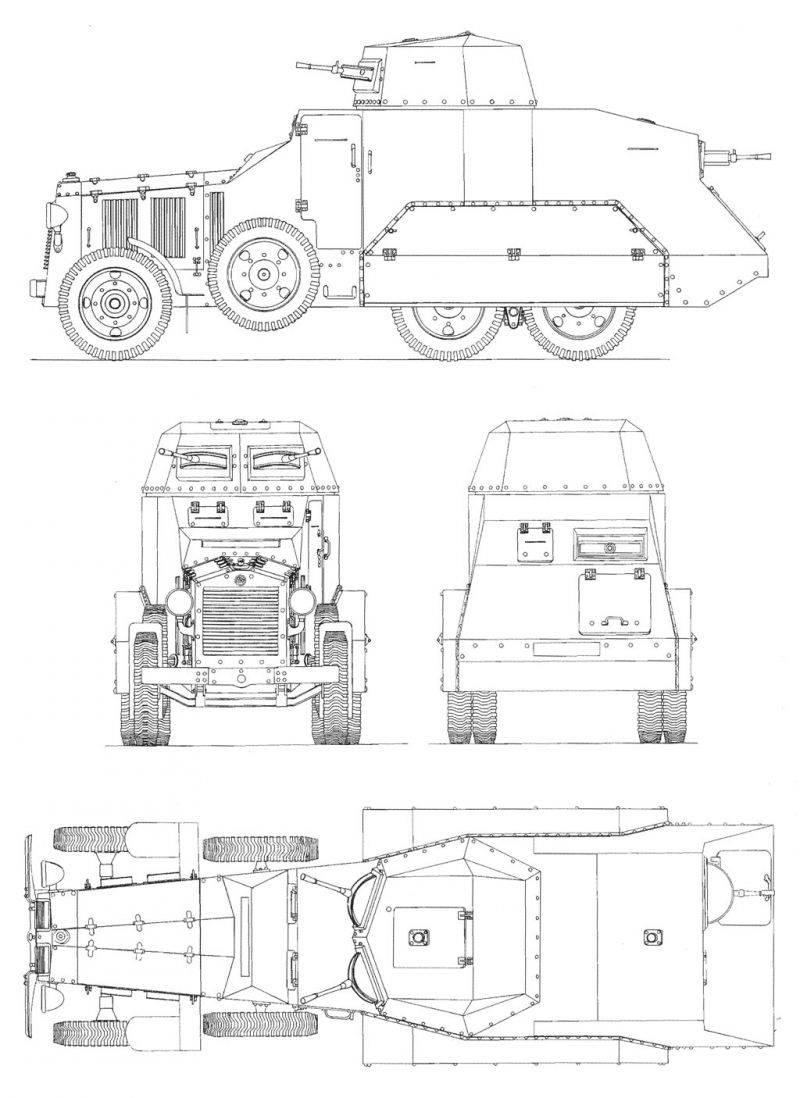
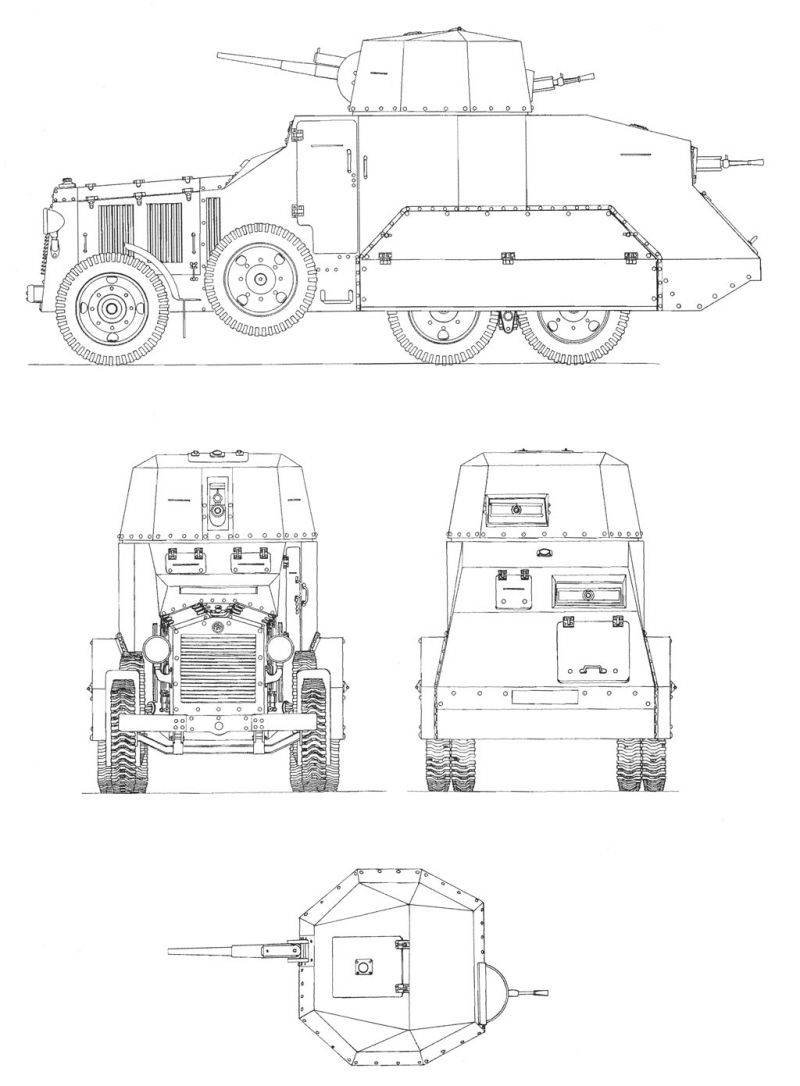
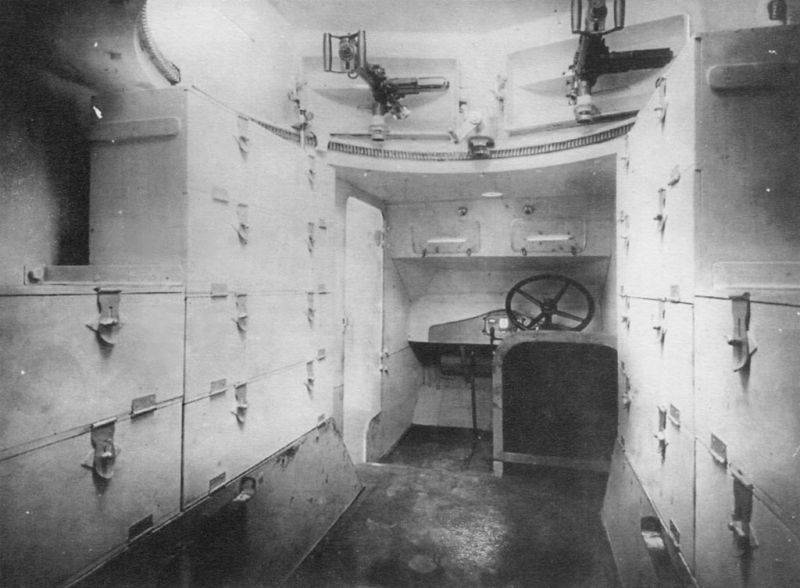
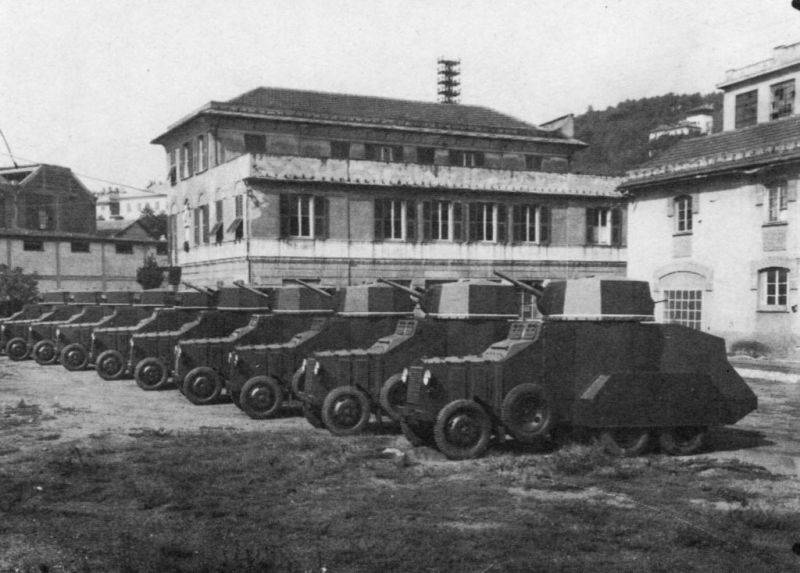
Information